The Exorcist (film series)
8.2 /10 1 Votes
Director William Friedkin Duration Film series The Exorcist Language English | 8/10 IMDb Genre Horror Running time 2h 12m Story by William Peter Blatty Country United States | |||||||||||||||||||||||||||||||||
 | ||||||||||||||||||||||||||||||||||
Writer William Peter Blatty , John Boorman , Rospo Pallenberg Release date 1973 (The Exorcist)
1977 (Exorcist II: The Heretic)
1990 (The Exorcist III)
2000 (The Exorcist: The Version Youve Never Seen)
2004 (Exorcist: The Beginning)
2005 (Dominion: Prequel to the Exorcist) Initial release June 19, 1973 (New York City) Cast Linda Blair (Regan), Max von Sydow (Father Merrin), Ellen Burstyn (Chris MacNeil), Jason Miller (Father Karras), Lee J. Cobb (Lt. Kinderman), Kitty Winn (Sharon)Similar movies Sometimes They Come Back... Again , Insidious: Chapter 2 , This Is the End , Grace , Exorcist II: The Heretic , [REC]³ Genesis Tagline Something almost beyond comprehension is happening to a girl on this street, in this house... and a man has been sent for as a last resort. This man is The Exorcist. | ||||||||||||||||||||||||||||||||||
The exorcist 1 5 movie clip a harrowing house call 1973 hd
The Exorcist is an American horror franchise consisting of five installments based on the novel The Exorcist, created by William Blatty, and part of The Exorcist franchise. The films have been distributed by Warner Bros. and 20th Century Fox.
Contents
- The exorcist 1 5 movie clip a harrowing house call 1973 hd
- The exorcist 3 5 movie clip head spin 1973 hd
- The Exorcist
- Exorcist II The Heretic
- The Exorcist III
- Exorcist The Beginning
- Dominion Prequel to the Exorcist
- The spider walk scene
- Reception
- Academy Awards
- Golden Globe
- Others
- Home media release
- On the DVD
- In the box
- Blu ray
- Television series
- References

The films have grossed over $661 million at the worldwide box office. Critics have given the films mixed reviews. In 2004, a prequel (Exorcist: The Beginning) was released. This was the second version of the prequel film made at that time as the first version (directed by Paul Schrader) was deemed unsatisfactory by the studio upon completion, and the entire project was refilmed by director Renny Harlin. However, Schrader's version received a limited release in 2005, after Harlin's, and was titled Dominion: Prequel to the Exorcist. On January 22, 2016, 20th Century Fox Television announced they were developing a television series of The Exorcist. It premiered on September 23, 2016.
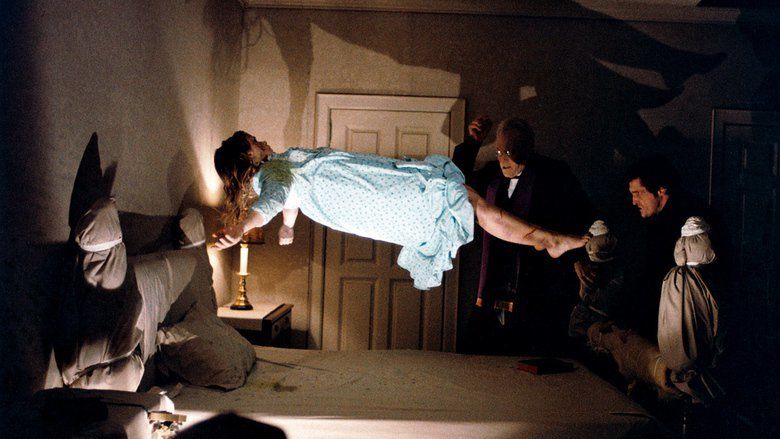
The exorcist 3 5 movie clip head spin 1973 hd
The Exorcist
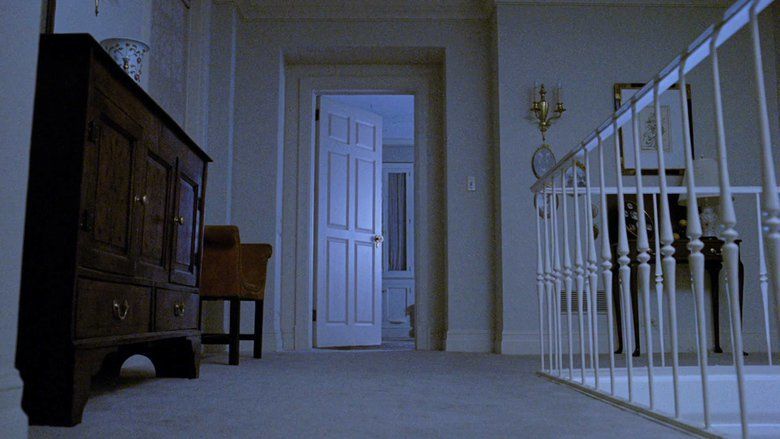
Based on the 1971 novel by William Peter Blatty, The Exorcist marries three scenarios into one plot.
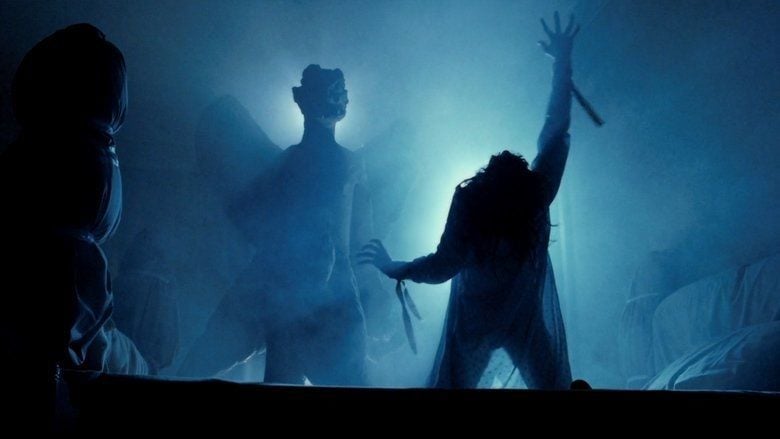
The movie opens with Father Merrin (Max von Sydow) on an archaeological dig in Al-hadar, near Nineveh, in Iraq. He is alerted that a small carving is found in the dig, resembling a grimacing, bestial creature. After talking to one of his supervisors, he travels to a statue of Pazuzu; the small carving resembles the head of the statue. He sees ominous figures and two dogs fight viciously nearby, setting the tone for the rest of the film.
Exorcist II: The Heretic
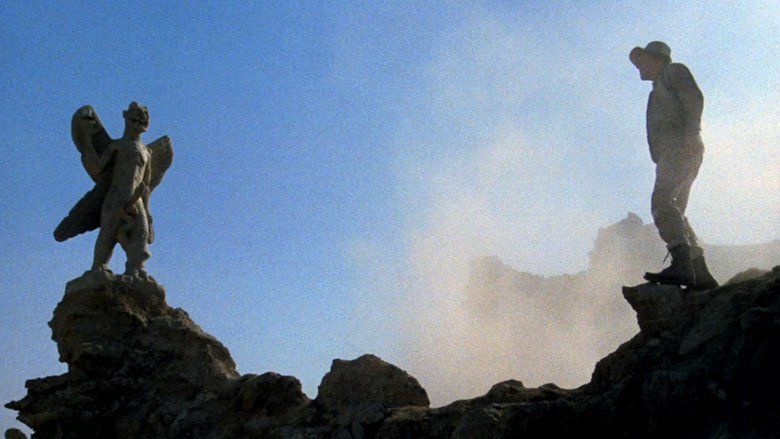
Father Philip Lamont (Richard Burton), who is struggling with his faith, is assigned by the Cardinal (Paul Henreid) to investigate the death of Father Lankester Merrin (Max von Sydow). Merrin was killed in the first film during the exorcism of Regan MacNeil (Linda Blair). The Cardinal informs Lamont (who has had some experience at exorcism, and has been exposed to Merrin's teachings) that Merrin is being investigated posthumously for heresy. Despite approval of the McNeil exorcism by a bishop, the Church is no longer convinced that McNeil was truly possessed, and the controversial nature of Merrin's books on the subject are being reconsidered as politically and theologically suspect.
The Exorcist III
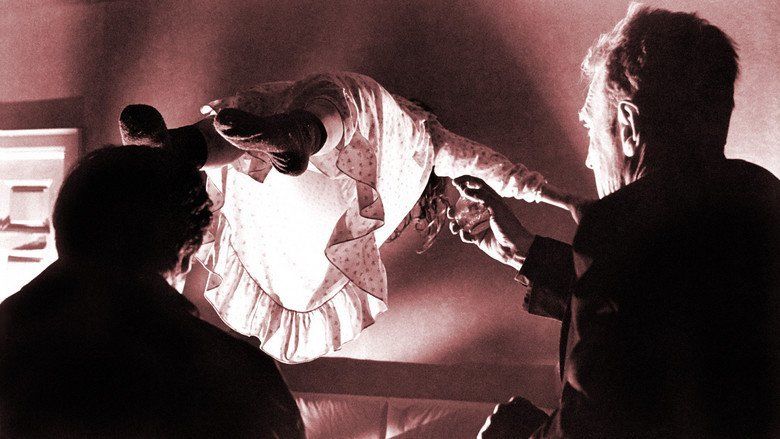
Adapted and directed by Blatty from his 1983 novel Legion, the film stars George C. Scott and several cast members (Jason Miller, Ed Flanders, Scott Wilson and George DiCenzo) from Blatty's previous film The Ninth Configuration. The story takes place 17 years after the events of The Exorcist and centers on the philosophical police detective William F. Kinderman from the first film. He investigates a series of brutal murders in Georgetown that resemble the modus operandi of a serial killer executed about the time of the McNeil exorcism.

Originally titled Legion, the film was drastically changed after rewrites and re-shoots ordered by the studio Morgan Creek Productions. Studio executives demanded the addition of an exorcism sequence, and retitled the film as The Exorcist III in order to more strongly tie the film to the rest of the franchise. All of the deleted footage is apparently lost.
Exorcist: The Beginning
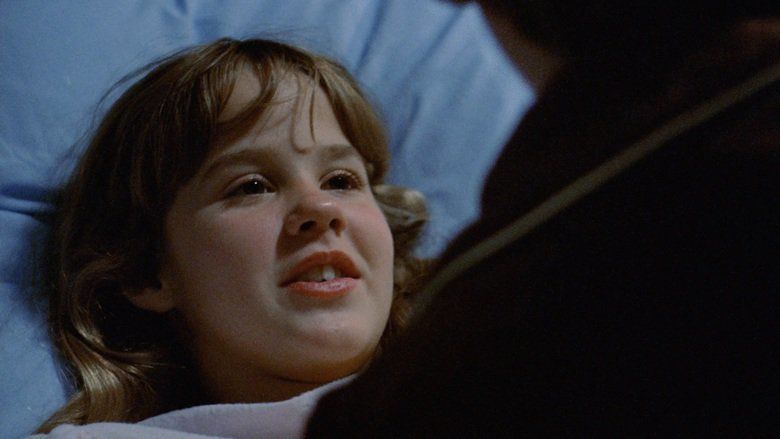
The plot revolves around the crisis of faith suffered by Father Merrin (Stellan Skarsgård) following the horrific events he witnessed during World War II.
After WWII, Merrin is an archaeologist in Cairo, when he is approached by a collector of antiquities who asks him to come to a British excavation in the Turkana region of Kenya. This dig is excavating a Christian Byzantine church from the 5th century—long before Christianity had reached that region. Further, the church is in perfect condition, as though it had been buried immediately after the construction was completed. Merrin is asked to participate in the dig and find an ancient relic hidden in the ruins before the British do. Merrin takes the job, but soon discovers that all is not well—something evil lies in the church and is infecting the region. The local tribesman hired to dig refuse to enter the building, and there are stories of an epidemic that wiped out an entire village. However, when Merrin, growing suspicious of these rumors, digs up one of the graves of the supposed victims of this plague, he discovers it is empty. Meanwhile, the evil grows, turning people against each other and resulting in violence, atrocities, and more bloodshed
Dominion: Prequel to the Exorcist
Many years before the events in The Exorcist, the young Father Lankester Merrin (played by Skarsgård, who played the same part in the Exorcist: The Beginning) travels to East Africa. Merrin has taken a sabbatical from the Church and devoted himself to history and archaeology as he struggles with his shattered faith. He is haunted especially by an incident in small village in occupied Holland during World War II, where he served as parish priest. Near the end of the war, a sadistic Nazi SS commander, in retaliation for the murder of a German trooper, forces Merrin to participate in arbitrary executions in order to save a full village from slaughter.
He meets up with a team of archaeologists, who are seeking to unearth a church that they believe has been buried for centuries. At first, Merrin resists the idea that supernatural forces are in play, but eventually helps them, and the ensuing events result in an encounter with Pazuzu, the same demon referenced in The Exorcist.
The "spider-walk scene"
Contortionist Linda R. Hager was hired to perform the infamous "spider-walk scene" that was filmed on April 11, 1973. Friedkin deleted the scene just prior to the original December 26, 1973 release date because he felt it was ineffective technically. However, with advanced developments in digital media technology, Friedkin worked with CGI artists to make the scene look more convincing for the 2000 theatrically re-released version of The Exorcist: The Version You've Never Seen. Since the original release, myths and rumors still exist that a variety of spider-walk scenes were filmed despite Friedkin's insistence that no alternate version was ever shot.
In 1998, Warner Brothers re-released the digitally remastered DVD of The Exorcist: 25th Anniversary Special Edition. This DVD includes the special feature BBC documentary, The Fear of God: The Making of The Exorcist, highlighting the never-before-seen original non-bloody version of the spider-walk scene. The updated "bloody version" of the spider-walk scene appears in the 2000 re-release of The Exorcist: The Version You've Never Seen utilizing CGI technology to incorporate the special effect of blood pouring from Regan's mouth during this scene’s finale.
The Exorcist III
Despite his misgivings about the studio-imposed reshoots, Blatty is proud of the finished version of The Exorcist III, having said, “It’s still a superior film. And in my opinion, and excuse me if I utter heresy here, but for me it’s a more frightening film than The Exorcist." Nevertheless, Blatty had hoped to recover the deleted footage from the Morgan Creek vaults so that he might re-assemble the original cut of the film which he said was "rather different" from what was released, and a version of the film fans of the Exorcist series have been clamouring for. In 2007, Blatty's wife reported on a fan site that "My husband tells me that it is Morgan Creek's claim that they have lost all the footage, including an alternate opening scene in which Kinderman views the body of Karras in the morgue, right after his fall down the steps." Mark Kermode has stated that the search for the missing footage is "ongoing".
An upcoming book titled The Evolution Of William Peter Blatty's The Exorcist III: From Concept To Novel To Screen by author Erik Kristopher Myers will reveal the whole story behind the film's development, and publish never-before-seen images, the original script, studio notes, various drafts of the story as it has evolved, and interviews with Blatty, Brad Dourif, Mark Kermode, John Carpenter, and many others associated with the film. Myers in an interview said that The Exorcist III "has sort of turned into horror genre’s equivalent to Orson Welles' The Magnificent Ambersons, in that it was originally a very classy film that the studio hacked apart and turned into a commercial piece [...] I'm basically trying to chronicle how a film can get away from the auteur and be transformed into a purely commercial product."
Reception
Upon its release on December 26, 1973, the film received mixed reviews from critics, “ranging from ‘classic’ to ‘claptrap'." Stanley Kauffmann, in The New Republic, wrote, “This is the most scary film I’ve seen in years — the only scary film I’ve seen in years…If you want to be shaken — and I found out, while the picture was going, that that’s what I wanted — then The Exorcist will scare the hell out of you.” Variety noted that it was “an expert telling of a supernatural horror story…The climactic sequences assault the senses and the intellect with pure cinematic terror.” In Castle of Frankenstein, Joe Dante opined, “[A]n amazing film, and one destined to become at the very least a horror classic. Director William Friedkin’s film will be profoundly disturbing to all audiences, especially the more sensitive and those who tend to 'live' the movies they see…Suffice it to say, there has never been anything like this on the screen before.”
However, Vincent Canby, writing in the New York Times, dismissed The Exorcist as “a chunk of elegant occultist claptrap…[A] practically impossible film to sit through…it establishes a new low for grotesque special effects...” Andrew Sarris complained that “Friedkin’s biggest weakness is his inability to provide enough visual information about his characters…whole passages of the movie’s exposition were one long buzz of small talk and name droppings…The Exorcist succeeds on one level as an effectively excruciating entertainment, but on another, deeper level it is a thoroughly evil film.” Writing in Rolling Stone, Jon Landau felt the film was, “[N]othing more than a religious porn film, the gaudiest piece of shlock this side of Cecil B. DeMille (minus that gentleman’s wit and ability to tell a story) …”
Over the years, The Exorcist's critical reputation has grown considerably. The film currently has an 85% "Certified Fresh" approval rating on the Rotten Tomatoes website, based on 40 reviews the website collected. Some critics regard it as being one of the best and most effective horror films; admirers say the film balances a stellar script, gruesome effects, and outstanding performances. However, the movie has its detractors as well, including Kim Newman who has criticized it for messy plot construction, conventionality and overblown pretentiousness, among other perceived defects. Writer James Baldwin provides an extended negative critique in his book length essay The Devil Finds Work.
II: Stephen H. Scheuer wrote that Exorcist II “may just well be the worst sequel in the history of films – a stupefying, boring, vapid and non-scary follow-up to the box-office champ of 1973...Exorcist II is a disaster on every level – a sophomoric script, terrible editing, worst direction by John Boorman, inevitably coupled with silly acting. In one scene that typifies this lamentable sci-fi horror pic, [Richard] Burton and [James Earl] Jones, two splendid actors, are spouting inane dialogue while Jones is outfitted like a witch doctor.” Leslie Halliwell described the film as a “highly unsatisfactory psychic melodrama which...falls flat on its face along some wayward path of metaphysical and religious fancy. It was released in two versions and is unintelligible in either.” Leonard Maltin described the film as a “preposterous sequel...Special effects are the only virtue in this turkey.” Danny Peary dismissed Exorcist II as “absurd.”
While most reviewers responded negatively to the film, Pauline Kael greatly preferred Boorman's sequel to the original, writing in her review in The New Yorker that Exorcist II "had more visual magic than a dozen movies." Since Exorcist II's initial release, some notable critics and directors have praised the film. Kim Newman wrote in Nightmare Movies (1988) that "it doesn't work in all sorts of ways... However, like Ennio Morricone's mix of tribal and liturgical music, it does manage to be very interesting." Director Martin Scorsese asserted, "The picture asks: Does great goodness bring upon itself great evil? This goes back to the Book of Job; it's God testing the good. In this sense, Regan (Linda Blair) is a modern-day saint — like Ingrid Bergman in Europa '51, and in a way, like Charlie in Mean Streets. I like the first Exorcist, because of the Catholic guilt I have, and because it scared the hell out of me; but The Heretic surpasses it. Maybe Boorman failed to execute the material, but the movie still deserved better than it got."
Author Bob McCabe's book The Exorcist: Out of the Shadows contains a chapter on the film in which Linda Blair said the movie "was one of the big disappointments of my career," and John Boorman confessed that “The sin I committed was not giving the audience what it wanted in terms of horror...There’s this wild beast out there which is the audience. I created this arena and I just didn’t throw enough Christians into it. People think of cutting and re-cutting as defeat, but it isn’t. As Irving Thalberg said: ‘Films aren’t made, they’re remade.’” McCabe himself offered no one answer as to why Exorcist II failed: "Who knows where the blame ultimately lies. Boorman's illness and constant revising of the script can't have helped, but these events alone are not enough to explain the film's almighty failure. Boorman has certainly gone on to produce some fine work subsequently...When a list was compiled to find the fifty worst films of all time, Exorcist II: The Heretic came in at number two. It was beaten only by Ed Wood's Plan 9 from Outer Space, a film that generally receives a warmer response from its audience than this terribly misjudged sequel."
III:The film met with mixed reviews. New York Times reviewer Vincent Canby said "The Exorcist III is a better and funnier (intentionally) movie than either of its predecessors" and British film critic Mark Kermode called it "a restrained, haunting chiller which stimulates the adrenalin and intellect alike." However Owen Gleiberman of Entertainment Weekly gave a negative review, stating "If Part II sequels are generally disappointing, Part IIIs are often much, much worse. It can seem as if nothing is going on in them except dim murmurings about the original movie — murmurings that mostly remind you of what isn't being delivered." Gleiberman called The Exorcist III "an ash-gray disaster" and that it "has the feel of a nightmare catechism lesson, or a horror movie made by a depressed monk." Kim Newman claimed that "The major fault in Exorcist III is the house-of-cards plot that is constantly collapsing." Kevin Thomas of Los Angeles Times gave a mixed review, saying Exorcist III "doesn't completely work but offers much more than countless, less ambitious films."
Academy Awards
The Exorcist was nominated for a total of ten Academy Awards in 1973. At the 46th Annual Academy Awards ceremony, the film won two statuettes.
The film was nominated for:
Golden Globe
The Exorcist was nominated for a total of five Golden Globes in 1973. At the Golden Globes ceremony that year, the film won four awards.
The film was nominated for
Others
American Film Institute recognition
In 1991, The Exorcist III won a Saturn Award from the Academy of Science Fiction, Fantasy & Horror Films, USA, for Best Writing (William Peter Blatty) and was nominated for Best Supporting Actor (Brad Dourif) and Best Horror Film. However it was also nominated for Worst Actor (George C. Scott) at the Golden Raspberry Awards. In 2005, Exorcist: The Beginning was nominated for two Golden Raspberry Awards, Worst Director (Renny Harlin) and Worst Remake or Sequel.
Home media release
A limited edition box set was released in 1998. It was limited to 50,000 copies, with available copies circulating around the Internet. There are two versions; a special edition VHS and a special edition DVD. The only difference between the two copies is the recording format.
On the DVD
In the box
Blu-ray
In an interview with DVD Review, William Friedkin mentioned that he is scheduled to begin work on a 'The Exorcist' Blu-ray on December 2, 2008. This edition features a new restoration, including both the 1973 theatrical version and the "version you've never seen" from 2000. It was released on October 5, 2010.
On September 23, 2014, in preparation for the first film's 41st anniversary, the complete collection of The Exorcist was released as The Exorcist: The Complete Anthology containing all five films restored on Blu-ray. The rest of the installments of the franchise were also given an individual release for the first time on Blu-ray with the exception of Dominion: Prequel to the Exorcist which can only be obtained on Blu-ray by purchasing the collection.
Television series
On January 22, 2016, 20th Century Fox Television announced they were developing a television series of The Exorcist. On February 2, 2016, Rupert Wyatt was hired to direct the pilot episode. On March 2, 2016, Alfonso Herrera and Ben Daniels were cast as Father Tomas Ortega and Father Marcus Lang. Geena Davis was cast as Angela Rance in the pilot.
The pilot filmed in Chicago in early 2016, and on May 10 the series was greenlit for a first season.
References
The Exorcist (film series) WikipediaThe Exorcist (film series) IMDb The Exorcist (film series) themoviedb.org
